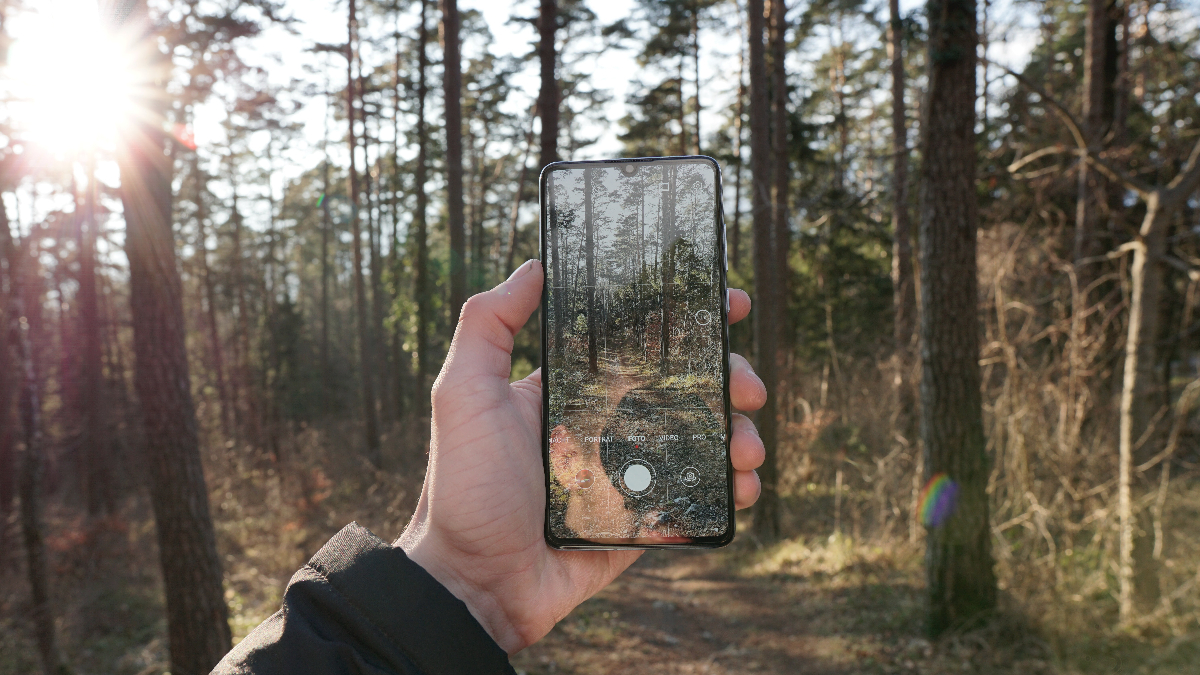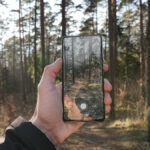We live in a digital world, one in which we can connect with others across the globe with the click of a button. A world where we can develop close personal friendships with people we’ve never met face-to-face. One hundred years ago, most families didn’t own cars. Now, cars are starting to drive themselves.
For many people, the natural world has never seemed farther away. Yet, we see these beautiful overlaps in which technology is used to help nature or reconnect. That leads to the question: where does augmented reality fit into the battle of nature vs. technology, and is it a battle at all?
Is Technology a Part of Nature?
Perhaps one of the greatest debates since nature vs. nurture is whether technology goes against nature or is, in fact, a part of it.
A comprehensive Gallup study shows that two out of three Americans associate the word technology with computers and the internet as the core definition. The real definition is far broader.
The word “technology” is derived from the Greek words tekhnē (art or craft) and logia (communication). This terminology evolved to become “technology” during the 17th century, well before WiFi and smartphones were even imagined. In simplest terms, technology is defined as:
So here’s where the debate begins. If technology is human knowledge and environmental manipulation, doesn’t that make it a part of nature? Are human-made structures comprised of natural elements not derived from nature? We harness electricity, metal, fuel, and raw materials from the environment to create technology, after all.
Technology is also held to the laws of nature. While innovations like airplanes and rockets seemingly defy the laws of gravity, the opposite is true. While scientists and inventors can create new, exciting things not found in nature, they use natural elements to do so; you can’t create something from nothing.
And does technology take us farther from nature when so many innovations help us reconnect with or fix it? Or, would those innovations be necessary if we hadn’t used technology to mess it all up in the first place?
We would posit that scientifically, technology is a part of nature. Emotionally, not so much. But rather than fixating on how we got here, let’s shift the focus to how we can use technology to reconnect with the natural world and maybe even save it.
Humans vs. Nature: The Biophilia Hypothesis
While we humans are complex, organic computers, we come from nature. While we’ve evolved from hunched over Commodore 64s to the latest Mac or Microsoft iteration (not touching that debate), some of our core processing systems remain un-updated. We see this in our fight-or-flight response, which was designed to protect us from lions, tigers, and bears, oh my, but also kicks in when we’re stressed at work, watching a scary movie, or fighting with strangers on the internet.
We’re also emotionally connected to our roots in the natural world. The Biophilia Hypothesis posits that humans have an innate emotional and physical connection with nature. Studies have shown that spending time in the forest can greatly reduce stress levels, while spending too much time online leads to heightened stress and anxiety.
Many of us found ourselves with more time to walk around and enjoy nature during the pandemic while simultaneously spending more time plugged in. Meanwhile, augmented reality nature apps became more popular, supporting the idea that AR can bring us closer to nature.
How AR is Used to Connect with Nature
Nature vs. tech arguments aside, AR helps us reconnect with nature in several ways. Here are a few examples of how augmented reality is supporting our connection with the natural world.
Safe Access to Unsafe Destinations
Picture this: you’re planning a hike into a new, challenging trail system. You know you’re making progress, but you’re not quite sure where you are on the trail or if it’s this hill or the next one you want to explore. You turn on the Horizon Explorer app and point it at the path. It tells you which hill is which, the elevation, and the distance to your destination.
AR is making nature adventuring a little safer for newcomers to the outdoors. There was a 20% increase in outdoor activity participation during the pandemic, with people hitting the trails and looking for a breath of fresh air. Using augmented reality can provide real-time information to help aspiring adventurers make informed decisions.
Virtual reality is also an incredible way to access unsafe locations you’ve dreamed of seeing. Now you can step onto an Icelandic glacier or walk through the volcano fields of Hawaii— all without leaving your living room.
Education and Knowledge Engagement
Building awareness and knowledge about nature is an integral first step in reconnecting and protecting the natural world. As augmented reality encourages users to engage and take an active approach to receiving and retaining information, this is a powerful medium for education about nature.
Rewild Our Planet is touted as an immersive AR nature experience which aims to reconnect humans with the natural world using incredible footage from Netflix’s Our Planet. It also helps people connect with one another in a shared technological nature experience.
Many apps are also helping people expand their knowledge about various aspects of the natural world, contributing to scientific learning in remote environments. Outdoor apps like Seek use AR to scan and identify flora and fauna to increase people’s knowledge of plants and animals in their area. Similarly, SkyView scans the sky and provides information about the constellations in real-time.
AR is creating a new opportunity for people to learn about and interact with the natural world in ways books and documentaries can’t.
Promoting Sustainability
The increased engagement and learning opportunities are an important first step in using AR to save the world, but that’s not all. Augmented reality is also indirectly helping improve sustainability and eco-conscious measures.
Many large businesses are using AR to streamline manufacturing and supply chain operations, cutting waste and optimizing travel time to reduce their carbon footprint. eCommerce businesses have noticed a significant decrease in product returns with AR, which also contributes to less transportation and waste.
AR also reduces the need for printed paper to share information, with many manufacturers creating AR guides and restaurants shifting to AR menus. Brands like Burger King have replaced wasteful plastic toys with an AR game that engages children without contributing to the landfills when parents go on a purge of cheap toys.
AR and VR are being implemented in all industries to reduce waste and improve processes, contributing to a more sustainable world.
Limitations in AR vs. Nature
There’s a strong argument for AR as we look at how technology can help nature. However, there are a few downsides to consider as well.
Reduced Spontaneity
If everything is mapped out for you, you’ll miss out on some spontaneous adventures. Maybe, if you had climbed the wrong hill, you would have seen a spectacular view or wildlife interacting below. Maybe, as you scan the stars and identify the constellations, you’re limiting yourself from the joy of late-night conversations and wishing on shooting stars.
AR can reduce the risks we experience when interacting with nature, but with risk comes reward, and with experience comes knowledge. Are we limiting ourselves by relying on technology as a filter for our interactions with nature?
Limitations in Realism
You step onto that virtual glacier yet don’t feel the wind and smell the cool, crisp air. You experience the volcanoes but don’t feel the same rush of awe and adrenaline as you would watching the lava bubble from a helicopter above.
AR and VR can create an experience we might not otherwise get, but it’s still limited— at least until haptics are figured out.
Potential for Diminished Benefits
We get profound physiological benefits from interacting with nature— but do extended reality experiences offer the same benefits? Do we still get the same level of stress relief and mindfulness if we’re using a connected device in nature? Or are we just creating more opportunities for distraction?
Final Thoughts
Sorry to disappoint if you came here looking for a crisp, clear answer in the nature vs. technology argument. This article is meant to highlight some of the benefits AR can provide when connecting with the natural world, sure, but it’s also to get you thinking about your place in the natural world and how your technology use can positively or negatively impact the experience.
The key takeaway: AR can help you connect with nature and lead a more sustainable life if used intentionally and mindfully. AR apps can help you learn about the natural world and guide you as you explore it, but don’t forget to put down the screen, look around, feel the breeze, and smell the roses.


